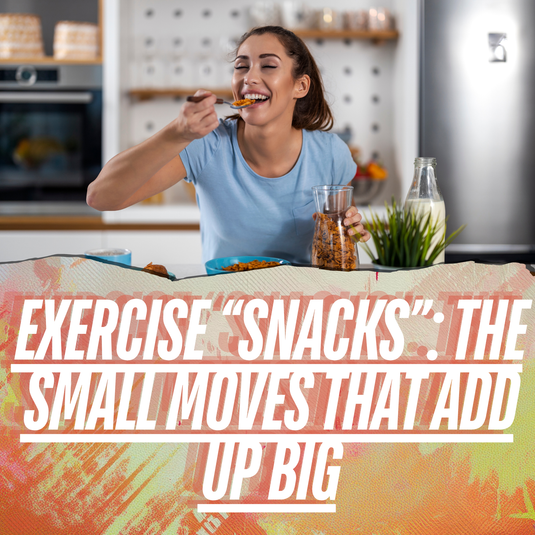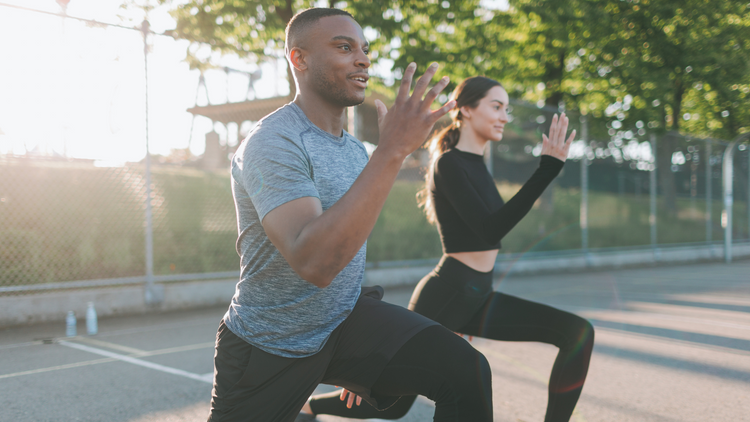Resistance Band Workouts for Fat Loss

⏱️ Estimated Read Time: 6 minutes
🧠 TL;DR
- Resistance Band Workouts for Fat Loss offers effective, accessible movements for targeted results.
- This guide is designed to help you move smarter, build strength, and stay consistent.
✍️ Summary
This post explores resistance band workouts for fat loss in a way that’s actionable and easy to follow. Whether you're new to this style of training or leveling up, it includes practical takeaways for your routine.
📚 Table of Contents
Can You Lose Weight with Resistance Band Workouts?
Losing body fat is a common fitness goal that goes beyond the desire for a leaner, more sculpted physique. Reducing body fat is closely linked to improving overall health, as excessive fat can lead to various health issues. While traditional weightlifting and cardio exercises are effective methods, resistance band workouts offer a versatile and efficient alternative. In this comprehensive guide, we'll explore the science behind using resistance bands for fat loss and provide a step-by-step plan to help you achieve your fitness goals.
Why Resistance Bands are Effective for Fat Loss
Yes, resistance bands are effective for fat loss. They work by creating muscle tension and engaging multiple muscle groups simultaneously, leading to higher calorie expenditure during workouts. Resistance band exercises also boost metabolism, increasing calorie burn and aiding in fat loss.
Resistance bands create tension throughout the entire range of motion, engaging multiple muscle groups simultaneously. This increased muscle activation leads to higher calorie expenditure during workouts.
Resistance bands can be used for resistance band workouts, targeting major muscle groups such as the legs, arms, back, and core.
Resistance bands can elevate your heart rate and boost your metabolism, leading to increased calorie burn and fat loss.
Resistance band exercises can burn a significant amount of calories, making them a practical option for fat loss.
Effective Resistance Band Exercises for Fat Loss
Executing resistance band exercises properly is essential for achieving your fat loss goals. Here are some effective resistance band exercises and how to perform them:
- Place your feet in the center of the resistance band, shoulder-width apart.
- Hold one band end in each hand, raising them to shoulder height.
- Keep your back straight, chest up, and core engaged.
- Perform squats as you would without the band, pushing through your heels.
- Return to the starting position.
- Strengthens your lower body, including the quadriceps and glutes.
- Engages your core for stability.
- The band adds resistance, making the exercise more challenging and effective.
Remember to adjust the resistance level of the bands as needed to match your fitness level and goals. For those new to resistance band workouts, resistance bands exercises for beginners can be a great starting point.

Yes, resistance bands are effective for fat loss. They work by creating muscle tension and engaging multiple muscle groups simultaneously, leading to higher calorie expenditure during workouts. Resistance band exercises also boost metabolism, increasing calorie burn and aiding in fat loss.
Resistance Bands for Muscle Engagement
Resistance bands create tension throughout the entire range of motion, engaging multiple muscle groups simultaneously. This increased muscle activation leads to higher calorie expenditure during workouts.
Resistance bands can be used for full-body workouts, targeting major muscle groups such as the legs, arms, back, and core.
Metabolic Benefits of Resistance Bands
Resistance bands can elevate your heart rate and boost your metabolism, leading to increased calorie burn and fat loss.
Resistance band exercises can burn a significant amount of calories, making them a practical option for fat loss.
Preparing for Resistance Band Workouts for Fat Loss
Choosing the Right Resistance Level
Select a resistance band that challenges you but allows you to maintain proper form. Resistance bands come in various levels of resistance, from light to heavy. Start with a band that suits your current fitness level.
Proper Form to Stay Safe
Proper form is essential to prevent injuries and maximize the effectiveness of resistance band exercises. Start with the basics, ensuring your movements are controlled and precise.
Warm-Up to Activate Muscles
Always include a warm-up in your routine to increase blood flow, improve joint mobility, and reduce the risk of injury. Dynamic stretches and bodyweight exercises can prepare your muscles for the workout.
Effective Resistance Band Exercises for Fat Loss
Executing resistance band exercises properly is essential for achieving your fat loss goals. Here are some effective exercises and how to perform them
What Are the Best Resistance Band Exercises for Fat Loss?
Some of the best resistance band exercises for fat loss include squats, push-ups, and bent-over rows. These exercises engage multiple muscle groups, creating a higher calorie burn and promoting fat loss. Here is the list of the Resistance Band exercises to lose weight which are explained later one by one.
Resistance Band Squats
How to Do It
-
Place your feet in the center of the resistance band, shoulder-width apart.
-
Hold one band end in each hand, raising them to shoulder height.
-
Keep your back straight, chest up, and core engaged.
-
Perform squats as you would without the band, pushing through your heels.
-
Return to the starting position.
Benefits:
-
Strengthens your lower body, including the quadriceps and glutes.
-
Engages your core for stability.
-
The band adds resistance, making the exercise more challenging and effective.
Variation:
-
One-Legged Resistance Band Squats
-
Perform squats on one leg while holding the resistance band for an added balance and stability challenge.
-
Resistance Band Rows
How to Do It:
- Attach the resistance band to a sturdy anchor point at chest height.
- Stand facing the anchor, holding one end of the band in each hand.
- Step back to create tension in the band.
- Pull the bands towards your chest while squeezing your shoulder blades together.
- Slowly release the tension and return to the starting position.
Benefits:
- Targets your upper back and shoulders.
- Helps improve posture by strengthening the muscles responsible for retracting the shoulders.
- Offers a balanced counter to chest-focused workouts.
Variation:
- Single-Arm Resistance Band Rows
- Perform rows one arm at a time to focus on each side independently.
Resistance Band Push-Ups
How to Do It:
- Place the resistance band across your upper back.
- Hold the ends of the band in each hand.
- Assume the push-up position with your hands shoulder-width apart.
- Lower your chest to the ground, keeping your core engaged.
- Push back up to the starting position.
Benefits:
- Enhances chest and tricep strength.
- Provides additional resistance during push-ups.
- Engages your core for stability and control.
Variation:
- Wide-Grip Resistance Band Push-Ups
- Widen your hand placement during push-ups to emphasize different areas of the chest and shoulders.
Resistance Band Planks
How to Do It:
- Place the resistance band around your upper back.
- Get into a plank position, resting your forearms on the ground.
- Ensure your body forms a straight line from head to heels.
- Hold the position, engaging your core and glutes.
Benefits:
- Strengthens your core muscles.
- Promotes stability and balance.
- Adds intensity to a classic core exercise.
Variation:
- Side Planks with Resistance Band
- Incorporate a resistance band into side plank exercises to target your oblique muscles.
Resistance Band Lunges
How to Do It:
- Stand on the center of the resistance band with one foot.
- Hold one end of the band in each hand.
- Step back with your other foot, creating tension in the band.
- Perform lunges as you typically would, ensuring your front knee stays above your ankle.
Benefits:
- Targets the quadriceps, hamstrings, and glutes.
- Helps improve leg strength and stability.
- The resistance band adds an extra challenge to lunges.
Variation:
- Walking Resistance Band Lunges
- Take steps forward with each lunge, effectively moving across a space while adding resistance.
Circuit training is an effective way to maximize calorie burn and fat loss. Here's a sample resistance band circuit
Full-Body Fat-Burning Routine
Jump Squats with Resistance Band
- Wrap the band under your feet and hold it with your hands at shoulder height.
- Perform jump squats with the added resistance for an extra challenge.
Push-Up to Row
- Place the band around your upper back.
- Perform a push-up, and at the top, add a row by pulling the band towards your chest.
Plank with Band Leg Lifts
- Keep the band around your upper back and go into a plank position.
- Alternate lifting each leg while keeping your core engaged.
Lunge and Twist
- Hold the band with both hands, arms extended.
- Step into a lunge while twisting your torso towards the leading leg.
Band Jumps
- Stand on the center of the band and hold it with both hands at shoulder height.
- Perform vertical jumps, pulling the band upwards.
Repeat this circuit for 3-4 rounds with minimal rest between exercises for an effective full-body fat-burning workout
Creating a Weekly Resistance Band Workout Plan
Here's a sample weekly workout plan that combines resistance band exercises with cardio for fat loss
Monday for Resistance Band Strength Training
- Squats
- Rows
- Push-Ups
- Planks
- Lunges
Tuesday for Cardio
- 30 minutes of brisk walking, jogging, or cycling
Wednesday for Resistance Band Circuit
- Jump Squats
- Push-Ups to Rows
- Plank Leg Lifts
- Lunge Twists
- Band Jumps
- Perform each exercise with 12-15 reps for a full-body burn.
Thursday for Cardio
- 30 minutes of swimming or another cardiovascular activity
Friday for Resistance Band Strength Training
- Squats
- Rows
- Push-Ups
- Planks
- Lunges
Saturday for Cardio
- 30 minutes of high-intensity interval training (HIIT) with resistance band exercises
Sunday for Rest and Recovery
Remember to adjust the resistance level of the bands as your strength and endurance improve. This plan offers a balanced combination of strength training and cardio, promoting effective fat loss over time.
How Do I Use Resistance Bands for a Full-Body Workout for Fat Loss?
Using resistance bands for a full-body fat-loss workout involves a balanced approach. Incorporate exercises that target major muscle groups, including squats, push-ups, and bent-over rows. Perform these exercises correctly, focus on controlled movements, and ensure a challenging resistance level to create muscle tension.
How Often Should I Use Resistance Bands for Fat Loss?
Consistency is vital for fat loss. Aim to use resistance bands for fat loss at least 3-4 times weekly. The optimal frequency depends on your fitness level, goals, and the intensity of your workouts.
Tracking Your Progress
To stay motivated and gauge your progress, consider these tracking methods:
- Measurement: regularly measure your body, paying attention to areas where you want to lose fat, such as your waist, hips, or arms.
- Photographic Evidence: take before-and-after photos to visually assess your progress over time.
- Journaling: maintain a workout and nutrition journal to record your achievements, challenges, and goals. Document your exercises, the number of sets and reps, and any variations.
Nutrition for Fat Loss
Exercise alone won't lead to significant fat loss; a balanced diet is equally important. Focus on these dietary principles.
What is the Recommended Fat Loss Diet to Complement Resistance Band Workouts?

A recommended fat-loss diet complements your resistance band workouts by emphasizing a balanced intake of whole foods. Include lean proteins, vegetables, fruits, whole grains, and healthy fats. Consume fewer calories than you burn to create a caloric deficit that supports fat loss. Staying well-hydrated is also crucial for effective digestion and overall health.
Can Resistance Bands Help With Spot Reduction of Fat?
While resistance band exercises can effectively burn fat, it's important to note that spot reduction is a complex process. Fat loss typically occurs throughout the body rather than in specific areas. Resistance bands can contribute to overall fat loss and toning, but targeted spot reduction may be less effective.
Additional Tips for Fat Loss
Consider these additional tips to enhance your fat loss journey
- Sleep: prioritize quality sleep, which is essential for effective fat loss and muscle recovery.
- Stress Management: practice stress-reduction techniques like meditation, deep breathing, or yoga to lower stress levels.
- Professional Advice: If you have underlying health issues, consult a healthcare professional before starting a new exercise routine.
Safety Considerations
Always prioritize proper form and safety when using resistance bands. If you have any health concerns or conditions, consult a healthcare provider before starting a new fitness routine.
How Do You Prevent Injuries When Using Resistance Bands for Fat Loss?
Follow these safety guidelines to prevent injuries when using resistance bands for fat loss:
- Maintain proper form during exercises, focusing on controlled movements.
- Choose the right resistance band level for your fitness level.
- Gradually progress in intensity and resistance to avoid overexertion.
- Listen to your body, and if you experience pain or discomfort, stop the exercise immediately.
Q. Can You Lose Fat with Resistance Bands?
Q. How to Use Resistance Bands for Weight Loss?
- Full-Body Workouts: Perform compound exercises like squats, lunges, rows, and presses using resistance bands to engage multiple muscle groups and burn more calories.
- High-Intensity Interval Training (HIIT): Incorporate resistance bands into HIIT workouts for efficient fat burning and muscle toning.
- Progressive Overload: Gradually increase resistance or vary exercises to challenge muscles and continue burning fat.
- Consistency: Stick to a regular workout schedule that includes resistance band exercises, combined with a healthy diet, to achieve and maintain fat loss goals.
In Summary
Losing body fat with resistance bands is a holistic approach to fitness and health. By understanding the science, mastering proper form, maintaining a balanced diet, and adopting a healthy lifestyle, you can achieve your desired results. Remember that consistency, patience, and the correct information are the keys to success in your journey to lose body fat with resistance bands.
Helpful Resources:
Want more guidance? Check out our Weekly Dumbbell Workout #1.
📝 FAQs
How often should I do these exercises? +
2–3 times per week is a good starting point for most people.
Do I need equipment? +
Many of these can be done with just your bodyweight or a single kettlebell or dumbbell.
Can beginners do these routines? +
Yes! These movements are designed to scale with your fitness level.






